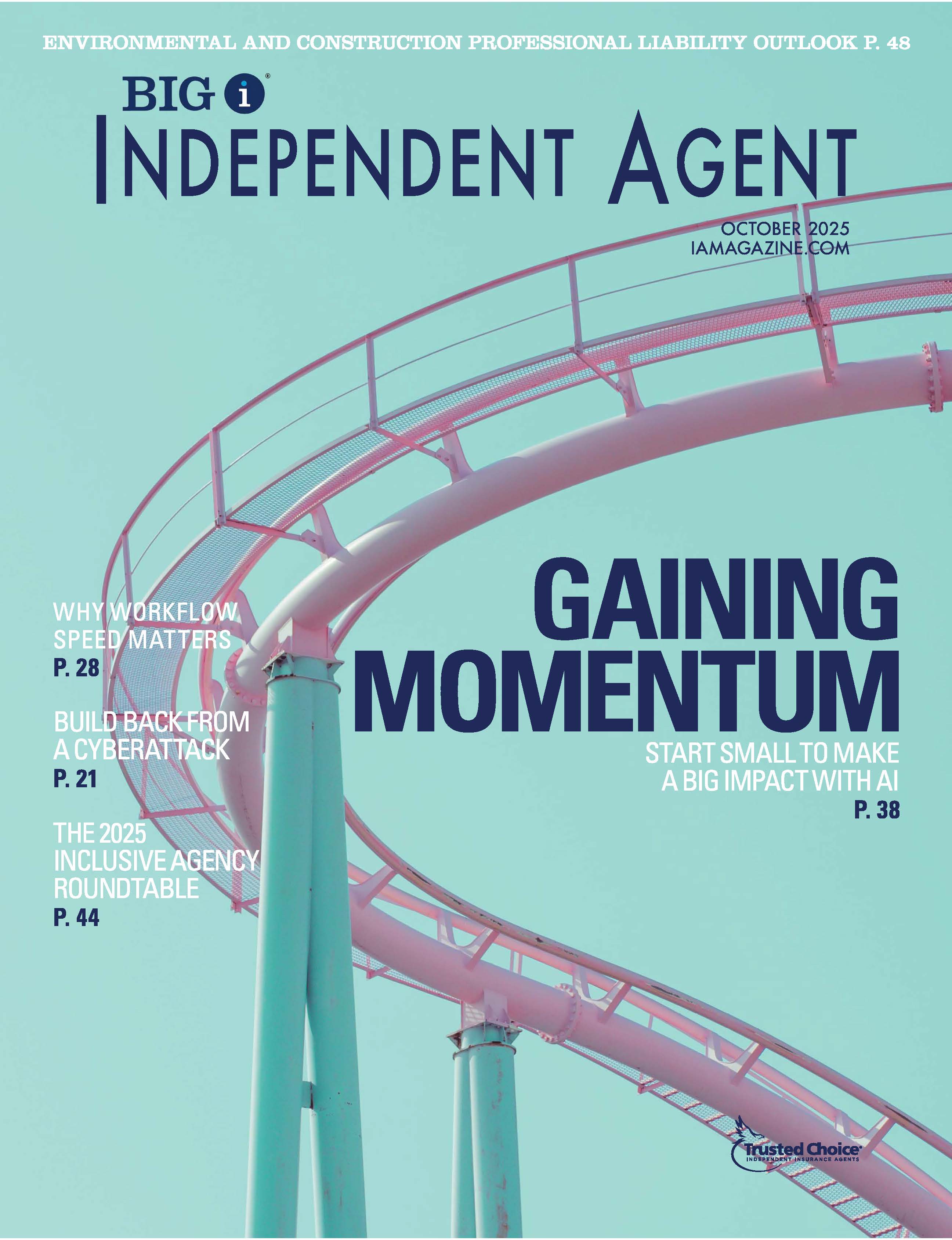How to Successfully Onboard a New Remote Employee

By: Justin Goodman
With the rise of working from home and the shortage of available customer service representatives (CSRs), onboarding a remote worker is becoming more and more likely for independent agencies. However, delivering a consistent onboarding experience is challenging, even for the most experienced agencies, and taking onboarding a step further to make it feel personalized without losing much-needed consistency can feel overwhelming.
As remote work becomes the norm in many agencies and, at the very least, an option for new hires, onboarding becomes a new challenge altogether. The process requires even more creativity to overcome the hurdles presented in a virtual environment.
Prepare for New Hires with Preboarding
This risk of employees feeling disconnected from the onset is higher in a virtual setup. To ensure this doesn’t happen with new hires, getting an early start on the onboarding process is essential to achieving the desired onboarding results.
Preboarding includes the steps agencies need to take before the employee’s first day. Here are three steps to take in advance that are critical to the success of Day 1:
1) Technology and supplies. HR, IT and the hiring manager should know what technology is necessary for the new employee to do their job on Day 1. Assumptions about equipment, internet and a phone can leave a new hire without the essentials, which can cause them to feel a little lost from the start. Creating a checklist of all items that need to be purchased, programmed and shipped will keep all parties on the same page.
2) Paperwork. The hiring process requires new hires to complete form after form. In the past, a new hire would complete many of these forms on the first day, but now, there is no reason to not take care of them ahead of time. Creating a clean and clear onboarding paperwork packet in an electronic format once the offer is accepted will allow the new hire to get this out of the way during preboarding. It will also allow HR to get all documentation reviewed and handle any details that require clarification before the first day.
3) Welcome message. A brief welcome email to the new hire when they accept the position can be a great way to get them excited about the new opportunity they will be exploring. Here’s a checklist of items your message should include:
- Introduction of the hiring manager who they will be working with.
- Appreciation for their trust in your agency.
- What to expect in the coming weeks, whether computer equipment or technicians will come to their residence to set up their office, and any other communication they may receive from the agency or affiliates.
- Required paperwork.
- A checklist of items to take care of before Day 1.
- A new hire questionnaire to get a feel for their personality and preferences.
- Contact information for agency personnel if questions or concerns come up.
If this feels like a lot for one email, consider breaking it up into a series throughout the days and weeks leading up to the first day.
On the other side of this is the need for internal communication. The hiring manager should send an all-office email announcing the new hire and what role they will fill. Even though employees will not interact the same way they would in a traditional office setup, this is not a step you should skip. It will help everyone remain connected with what happening in the agency, even in a remote work environment.
Emphasize Culture
Defining culture can be a challenge for many agencies. But translating it from the traditional office setup to a virtual environment adds a new element. Trying to express all of that to a new hire can feel borderline impossible. Even giant companies like Google have struggled to transition as a company that thrived on their in-office offerings to remote work environments. However, as hard as it may seem, there are ways to help share agency culture beyond in-person interactions and welcome new hires at the same time.
As you prepare for your new hire’s first day, put together a personalized welcome video from the agency owner, their manager and any other team members they will work with. Here are a few ideas:
- Welcome the employee by name.
- Provide a brief history.
- Explain the mission and values of the agency.
- Describe how their role contributes to the agency’s goals.
- Include a virtual tour of the agency office. Even if they won’t be working in the office in the short or long run, experiencing the office environment can help build a connection.
Sending a welcome video to the employee’s inbox first thing on the first day jumpstarts their engagement with the agency’s culture.
Connect Your New Hire with Co-Workers
Facilitating virtual meetings is an essential component of communication and will help your new hire get to know their way around the agency. Providing as many opportunities as possible to help a new employee make those connections from the start makes it quicker and easier to get comfortable with their co-workers and their role.
Your new hire’s first day should include a couple of one-on-one meetings. One of the most important meetings takes place between the hiring manager and the individual. This meeting is crucial as it may be one of the first opportunities the new hire has to get to know their supervisor outside of the interview process. During this meeting, the manager should:
- Ensure the employee has everything they need, such as equipment and supplies.
- Discuss work and training schedules, expectations and goals.
- Review check-in protocols.
- Address questions and concerns.
A meeting between the new hire and HR may be necessary as well. This meeting will provide a time to go over paperwork, discuss pending HR matters, and collect signatures and forms. HR can also address employee questions.
Interactions with the team they will work with is critical for the new hire to begin building relationships. “Gather” the group in a virtual meeting. Make sure everyone is on camera. If possible, schedule the meeting in a relaxed format, perhaps as a coffee-break style meeting or during lunch. This meeting allows the new hire to see and familiarize themselves with each person on the team.
Allowing a new employee to put a name with a face helps break the ice and establish a higher comfort level when working with and asking questions of other individuals in the future.
Set the Employee Up for Long-Term Success
Providing the tools and information the employee needs to start off on the right foot is important on that first day. It helps the employee feel more connected and settles those first-day jitters. However, creating a solid plan for their development over the weeks and months is just as important to their long-term success with the agency.
Training is critical to any new hire’s success, but the fallout of getting it wrong in a remote onboarding situation is much greater. Creating a solid training plan becomes even more imperative when the trainer and trainee work remotely.
Training starts with a well-written job description. Ensure the role is ultra clear. The confusion caused by ambiguity can be more destructive in a virtual environment. A new hire may be nervous about pressing for clarification, which puts the employee at risk for disengaging early on.
Individual goals need to be clearly defined. Ensure the employee understands the expectations and how they should progress in their training. Whether through coverage and process quizzes, activity reports or trainer feedback, leaving these things unexplained can be unsettling to a new hire. Also, document all these details and ensure that the manager and employee know where to access them.
Agencies must use technology to redesign and modernize training. Paper-heavy process guides no longer work. Digitizing workflows into a centrally located place is a minimum standard. Creating video tutorials for workflows and processes is the best way to provide step-by-step instructions a new hire can easily reference and repeat as needed. A combination of recorded tutorials, digitized workflows and virtual training sessions will help connect the dots.
Teamwork
Helping new hires connect with their team is essential to establish a comfort level within the agency and with their role. The more comfortable they are with the group, the more willing they will be to ask questions that will undoubtedly come up along the way.
One of the best ways to help a new hire integrate with the agency and their team is to assign a mentor. This person ideally has experience in the same role, is familiar with the technology options for communication, will stay in touch with the mentee and is a good advocate for the agency’s culture.
To ensure that the new hire stays engaged with the team, use these guidelines:
- Make sure teams have regularly scheduled meetings.
- Have all team members turn on cameras to create face-to-face interactions.
- Facilitate open dialogue where team members receive recognition for accomplishments and share problems and concerns.
- Encourage group feedback and brainstorming to solve problems.
The onboarding process presents challenges in both the in-person and remote environments. However, as the virtual world becomes a bigger part of our reality, agencies must give careful consideration and invest time to plan the onboarding process for new hires. When done right, an agency and a new hire can establish a connection that helps the employee achieve their professional goals, helping the agency to continue to grow and succeed.
This article is an excerpt from “Agency Amplified,” an Amazon bestselling book by Justin Goodman, the CEO and co-founder of Total CSR and the president of a third-generation independent agency, Goodman Insurance.










